|
|
||
 |
||
White-fleshed with fly |
|
|
||
 |
||
White-fleshed with fly |
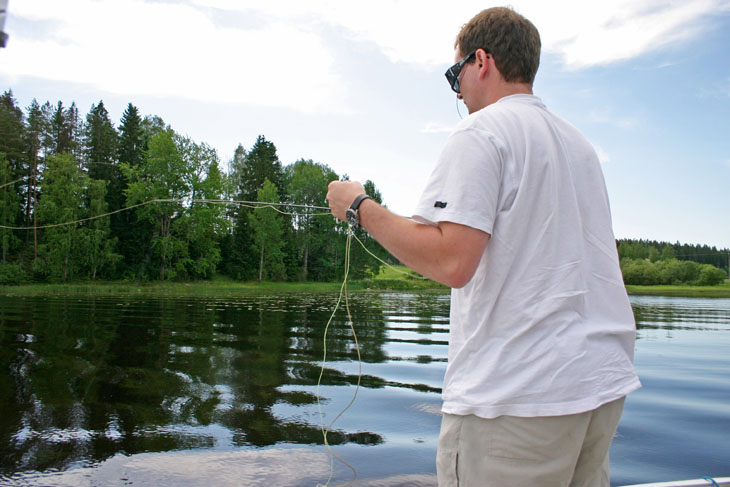 |
| Having spent many years in
South Africa saltwater fly-fishing I moved back to Europe in 95 only to find
target species limited and traditional fly-fishing extremely expensive. Then
I heard about pike fly-fishing and before you know it I was hooked. The main
reason for this was that I really didnt have to spend much on buying new
equipment and secondly pike are found in nearly every kind of waters (River,
Poulders, Dams, Lakes, Canals).
Fly-fishing for pike is now the fastest growing form of fishing in Europe, North America & Canada. Infact there are over 750 000 registered pike fly-fishermen in the British isles, Holland, Germany, France and Scandinavia alone, and so I was very suprised when I moved here to Finland with all the amount of water we have that The sport of fly-fishing for pike was in its infancy. |
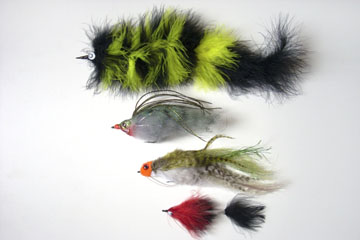 |
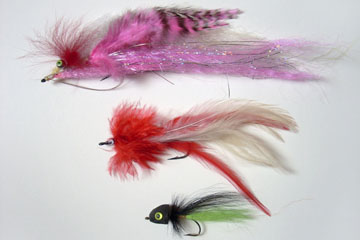 |
| New winds for fly-fishing. Often the shape and construction of pike flies does not resemble traditional flies very much. Photos: Simon Graham | |
| Fly fishing for
pike demands the use of a powerful rods in order to cast heavy lines needed
to present large flies. A 9' or ten foot rod designed to cast a 10 or 11
weight line is preferable. Casting large flies is made easier by the use of
heavy lines and there are now specially manufactured pike taper lines with
an exagerated weight forward profile on the market. Personally my self I
like to use a shooting head of around a metre and a half of fast sinking
braid. Always remember when fishing for pike the use of a wire trace is
essential at all times. A standard fly reel can be used but it must be able to at least have the capacity to hold at least 60 to 70 metres of backing just in case you hook in to the fish of lifetime. The only major difference between conventional fly-fishing and pike fly-fishing is off course the size of the flies. As any lure fishermen knows, the BIGGER the lure the bigger the fish and the same applies with fly-fishing for pike. Off course when starting out in the sport it is preferable to use smaller flies around the 50cm to 80 cm length but as you become more confident with casting a heavier fly your need to try longer and bigger ones off around the 100 cm to 150 cm length will take over. I prefer synthetic materials on my flies than natural products. Two reasons for this. Firstly synthetics hardly absorb any water and are easier to cast and secondly many natural products are far more heavier to cast & are more expensive to buy. |
|
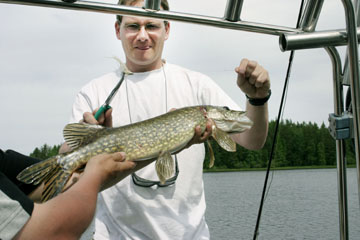 |
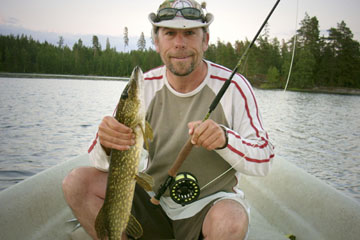 |
| Seasons | |
| The pike fly-fishing season starts here in the Tampere Pirkanmaa region around the end of April just as the ice has melted. Pike lie close into shore for the spawning season and are at there most active just after this period. The use of a slow sinking line around reed beds is most productive and I have found that pike will hit a fly at most times of the day. | |
| The summer months of July and August are the hardest months when targeting pike as they have moved into deeper water to lie low. Fast sinking line can be used but I have found that one needs to count down at least twenty seconds before stripping back the fly. | |
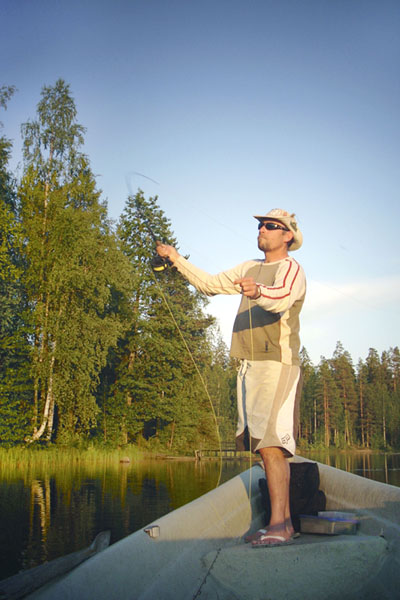 |
The beginning of September to
the end of October are also extremely productive months here in the
Pirkanmaa region when pike come back close into shore to hunt sholes of fry
so as to feed up before the winter sets in. Surface flies like Poppers are
best used here with either a floating line or a slow sinking line. Strikes
from pike are generally very aggressive and I find using poppers the most
exillerating form of pike fly-fishing. |